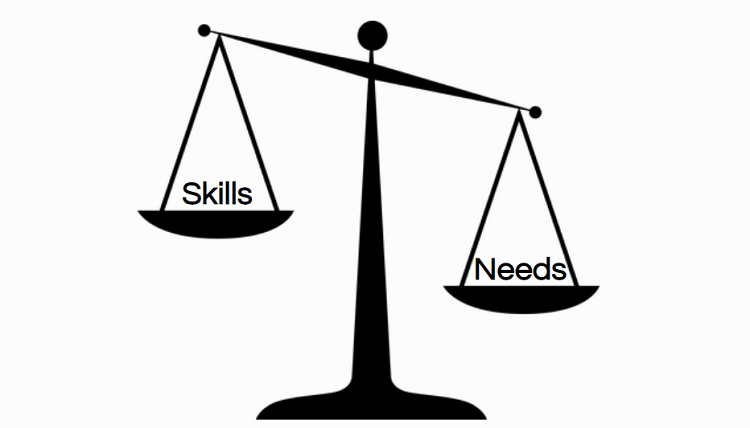- 200+ Applicant Tracking Systems in 2026 – Big & Small - December 23, 2025
- Using Multiple ATS’s Doesn’t Have to Hurt Your Candidate Experience - December 22, 2025
- What’s the Difference Between a Job Description, Job Posting, and Job Ad - June 5, 2025
I love job ads. I just found a study on them that I feel silly for missing. Sorry! It shows that speaking to a candidate’s needs in a job ad gets you 13.6% more applicants than focusing on the skills your job requires.
In other words, focusing on THEM beats focusing on YOU.
Not only that — you also get higher quality candidates when you focus on the candidate’s needs!

The study is called Does Emphasizing Different Types of Person–Environment Fit in Online Job Ads Influence Application Behavior and Applicant Quality? Evidence from a Field Experiment. I know: long title.
But it’s legit. It appeared in the Journal of Business and Psychology in June 2014, authored by Joseph A. Schmidt, Derek S. Chapman and David A. Jones. Copyright by Springer Science+Business Media.
Go check it out. But I have to warn you: it took me 2 hours to read (it’s pretty technical with a lot of math). Perhaps you’re a quicker study.
In case you don’t have time to review it yourself, I’m delighted to share the top nuggets with you.
Job Ads Should Speak to a Candidate’s Needs (and not just your own)
The main theme is simple. Your job ads should focus more on things that a CANDIDATE needs rather than the skills that YOU require of them.
The study recommends that you use more “Needs-based” content in your job ads.
Examples of Needs-Based Content
Here are some examples of the candidate needs-based content in the study that got more quality applications than the “Skills”-based content listed below it:
- “You will have the opportunity to work on a variety of tasks and develop your skills in many areas.”
- “The job will also provide you with autonomy as you will be required to complete tasks with minimal supervision.”
- “This position is on an important project, so the successful applicant will have the opportunity to make a valuable contribution to the organization and see the project through to its completion.”
- “We seek to provide employees with constructive feedback to foster their career growth.”
- “Employees are given many opportunities for advancement within the organization.”
- “You will have many opportunities to collaborate with talented people.”
Notice the commonalities?
Each line of content is focused on what the candidate (not you) needs.
Examples of Skills-Based Content
- “The successful applicant will have excellent written and verbal communication.”
- “Job incumbents will be required to show initiative in prioritizing tasks and carrying them through to completion.”
- “We are seeking people who want to contribute to the collective effort of their group and are committed to helping XX and the project team achieve their goals.”
- “The successful applicant will enthusiastically support and cooperate with others to develop effective solutions.”
- “We are looking for people who initiate action and inspire others to achieve the organization’s mission.”
The commonality of skills-based content is that it is focused on what you (the employer) needs.
Job Ad Optimization Study Methodology
The study consisted of 56 job ads posted by the Canadian head office of a large multinational engineering-consulting firm. They used the job board Workopolis.
Candidates viewed the job ads 18,047 times and 1,088 job seekers applied to one or more of the ads. The final sample size was 991 after some duplicates were removed.
854 (86.18 %) were male and 104 (10.49 %) were female and the organization’s HR representatives claimed this ratio was consistent with their typical applicant pools
The wording of the 56 job ads emphasized information about either candidate “Needs” or required “Skills”
The job ads were coded for 3 position types: engineering (20 positions), technical design (15 positions), or project administration including cost estimators, planner/schedulers, project accountants, and administrative coordinators (21 positions).
The Job Ad Study Results
The apply rate for the Needs job ads was 6.84% (13.6% higher than the 6.02% apply rate for the Skills-based job ads.
And the quality of applicant was better too.
When the applicants were measured for quality, the proportion of highest quality applicants (7.81 %) for the Needs-based job ads was higher than the 2.70 % for the skills-based job ads.
Finally, the candidate perception of employer was also higher when the job ads were based on needs versus skills. In other words, the employer brand was judged better by the candidates viewing the needs-based job ads (even though it was the same employer for all job ads).
In conclusion, when you write your job ads you want to focus on what the candidate (not you) needs.
Job Ad Candidate Needs (a longer list)
So, speaking to candidate needs (and not just your own) wins the day.
If you’d like to see a longer list of Candidate Needs check out Maslow’s Hierarchy of Candidate Needs for Job Ads. It includes a more complete list of candidate needs than this study tested such as:
- Compensation
- List of Benefits
- Office Location
- Health
- Relocation
- Who the candidate reports to
- What the team looks like
- Day in the life
- Mission statement
- Personal development
- Challenges the candidate will face
Why I wrote this?
Ongig’s mission is to hire you the best candidates through the best job content. So this great study is right up my alley!
